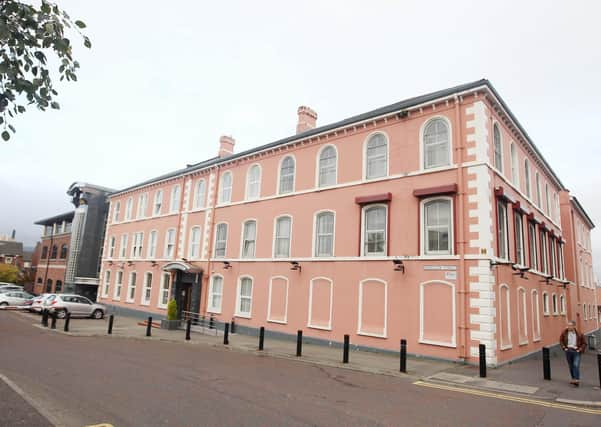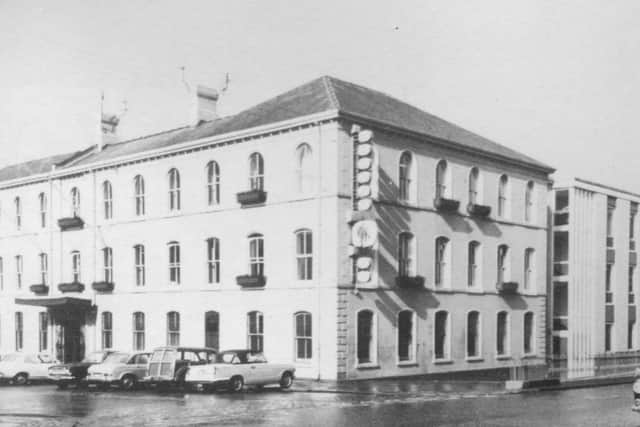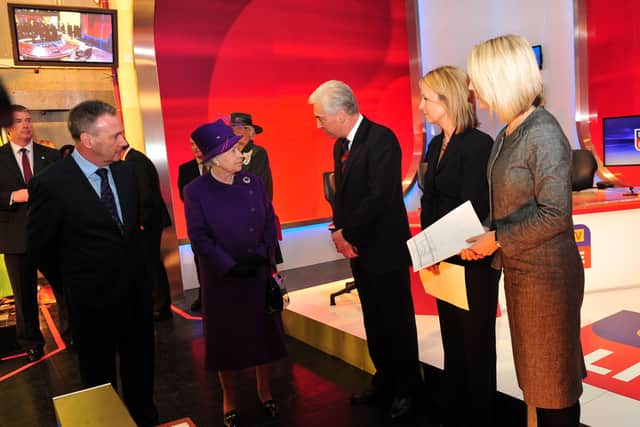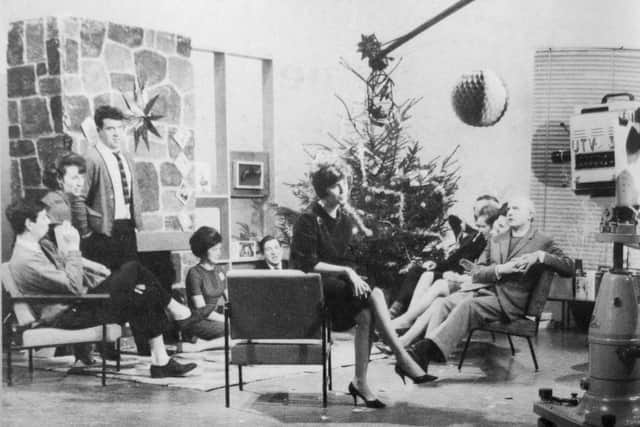The old UTV building Havelock House is one of Northern Ireland’s best-known cultural landmarks, yet it is to be flattened


Belfast City Council has long had a contradictory attitude to the city’s built heritage.
It boasts that Belfast’s streetscape is “a veritable storybook to rival any city in the UK or Ireland” while simultaneously allowing the removal of numerous pages through its support for developer-led regeneration.
Advertisement
Hide AdAdvertisement
Hide AdThe problem with this approach is that it inevitably leads to the type of clash between heritage and commerce now faced by the council in relation to former Ulster Television (UTV) headquarters at Havelock House.


The former linen warehouse on Belfast’s Ormeau Road is one of Northern Ireland’s best-known cultural landmarks yet faces demolition to make way for a high-density apartment complex.
The proposal from Olympian Homes is highly likely to succeed because the failings of our planning system have allowed the developer and the council to maintain the legal fiction that the building has no heritage value.
This position isn’t even remotely credible, given Havelock House’s integral role in the birth of Northern Ireland’s television industry, its indelible association with legendary local series such as Teatime with Tommy, Romper Room, Good Evening Ulster and Kelly and its status as the last surviving small station from the pioneering days of UK television.
Advertisement
Hide AdAdvertisement
Hide AdFeatures such as the original UTV studio, designed by local architect Brian Hewitt, are literally the nation’s last built record of the earliest days of television in regions such as Northern Ireland.


But, despite its clear historical importance, nobody seems willing to protect a building which occupies a prime development site.
There are two forms of protection available: full listed status, which can only be granted by the Department for Communities (DfC), and heritage asset status, which could be granted by Belfast City Council.
The DfC has decided that Havelock House does not meet the criteria for a listing survey, the first step in the listing process.
Advertisement
Hide AdAdvertisement
Hide AdIt reached this decision on the basis of a brief inspection of the building by officials in 2018.


The rationale behind its decision was never fully recorded. The fragments available suggest that the officials were not familiar with television architecture, leading them to make several inadvertent but decisive misinterpretations.
The DfC has been aware of this issue for 18 months yet has remains unwilling to review its decision.
Even if there were a review, it is unlikely the DfC’s decision will change because its listing criteria are dominated by aesthetic considerations.
Advertisement
Hide AdAdvertisement
Hide AdThis is exemplified by the protected status of the BBC’s Broadcasting House, which is an attractive building devoid of internal historical fabric.


By contrast, the DfC seems relaxed about the possible loss of Havelock House, a less attractive building with unique historical architecture.
The absence of listed building status isn’t necessarily an issue because local authorities can designate heritage assets, buildings which don’t meet the national listing criteria but should still be protected on cultural and historical grounds.
This author has been unable to find any instance where Belfast City Council has used this power.
Advertisement
Hide AdAdvertisement
Hide AdIt’s also unlikely to do so in the future because its current draft development plan indicates that only listed buildings qualify as heritage assets, which defeats the purpose of that designation.
The authorities’ inaction has not just left Havelock House exposed to demolition but it has reduced the public’s ability to scrutinise Olympian Homes’ demolition proposal.
Without protection, the developers and Belfast’s planners have been able to maintain the fiction that Havelock House is a building devoid of historical value.
This has allowed Olympian to submit a heritage statement which does not consider the historical or cultural impact of the building’s demolition. This is entirely legitimate as such statements are not required to disclose a development’s impact on unprotected structures.
Advertisement
Hide AdAdvertisement
Hide AdIt has also allowed the developers to avoid the type of public consultation normally triggered by planning applications which entail the demolition of historically significant buildings.
Due to Havelock House’s unlisted status, Olympian could conduct a minimalistic consultation.
It is impossible to assess the nature of Olympian’s consultation because the developer seems to have omitted its consultation report from its planning application. But it seems to have been poorly advertised – this author only became aware of the proposal by accident while, despite the development’s size, only a handful of objections have been received by the council to date.
The developer’s decision to name its development ‘Havelock House’ in spite of the intended demolition of the eponymous building also seems to have sown confusion.
Advertisement
Hide AdAdvertisement
Hide AdMy personal experience is that many people assume that the historic television station would be retained as part of the development.
The affair of Havelock House might seem extraordinary but the sad fact is that such scenarios are not uncommon in our planning system.
This has had a corrosive impact on public faith in the planning system: last month, a survey by Queen’s University found that 70% of people believe that Northern Ireland’s planning system does not serve the public interest.
Barring a miracle, events on Belfast’s Ormeau Road are likely to only reinforce this view.
Advertisement
Hide AdAdvertisement
Hide Ad• Dr Ken Griffin is a television historian and archivist whose doctoral thesis was on the history of Ulster Television. The public can make submissions to Belfast City Council about Olympian Homes’ planning application until July 10
——— ———
A message from the Editor:
Thank you for reading this story on our website. While I have your attention, I also have an important request to make of you.
With the coronavirus lockdown having a major impact on many of our advertisers — and consequently the revenue we receive — we are more reliant than ever on you taking out a digital subscription.
Subscribe to newsletter.co.uk and enjoy unlimited access to the best Northern Ireland and UK news and information online and on our app. With a digital subscription, you can read more than 5 articles, see fewer ads, enjoy faster load times, and get access to exclusive newsletters and content. Visit https://www.newsletter.co.uk/subscriptions now to sign up.
Advertisement
Hide AdAdvertisement
Hide AdOur journalism costs money and we rely on advertising, print and digital revenues to help to support them. By supporting us, we are able to support you in providing trusted, fact-checked content for this website.
Alistair Bushe
Editor